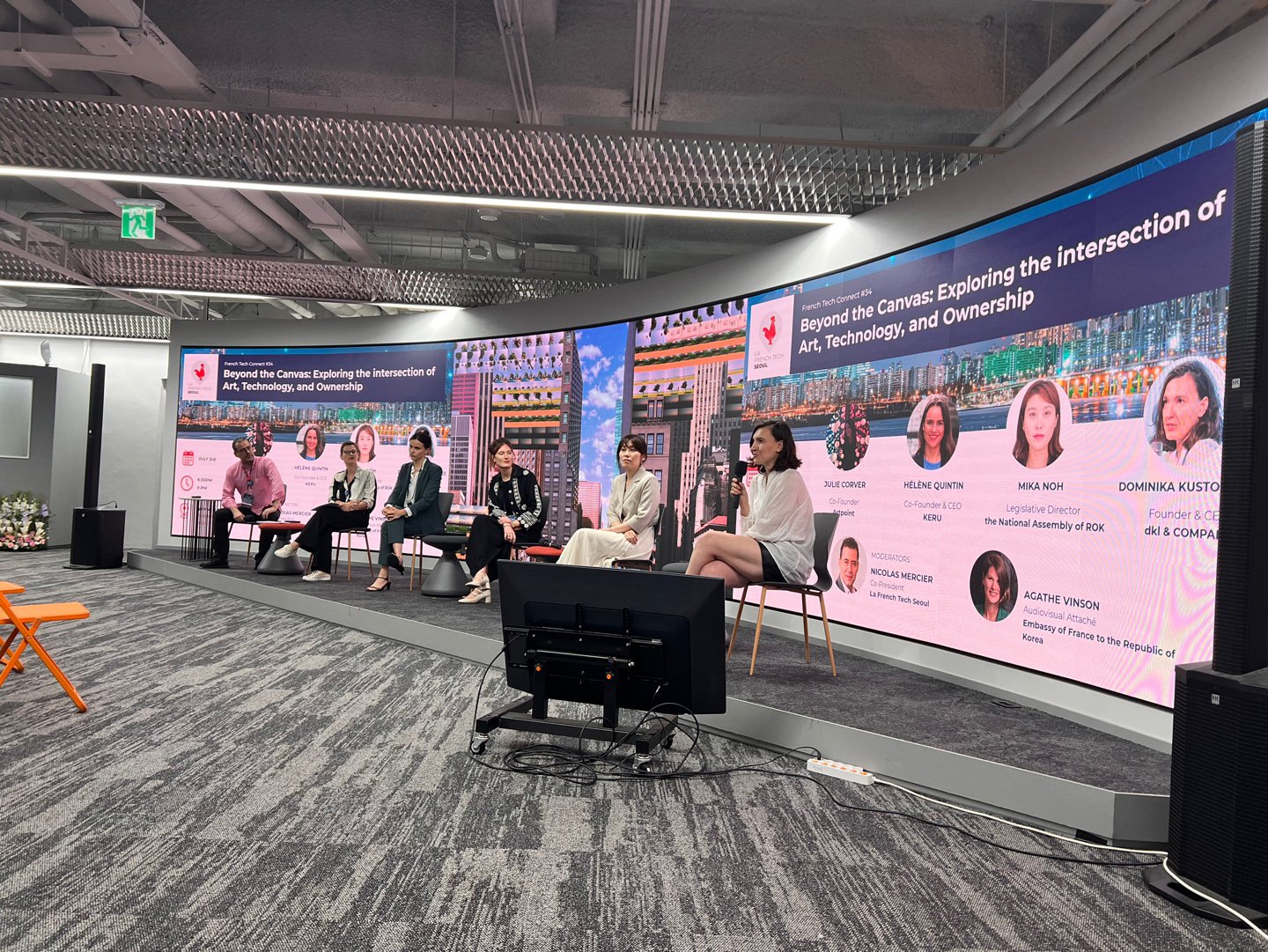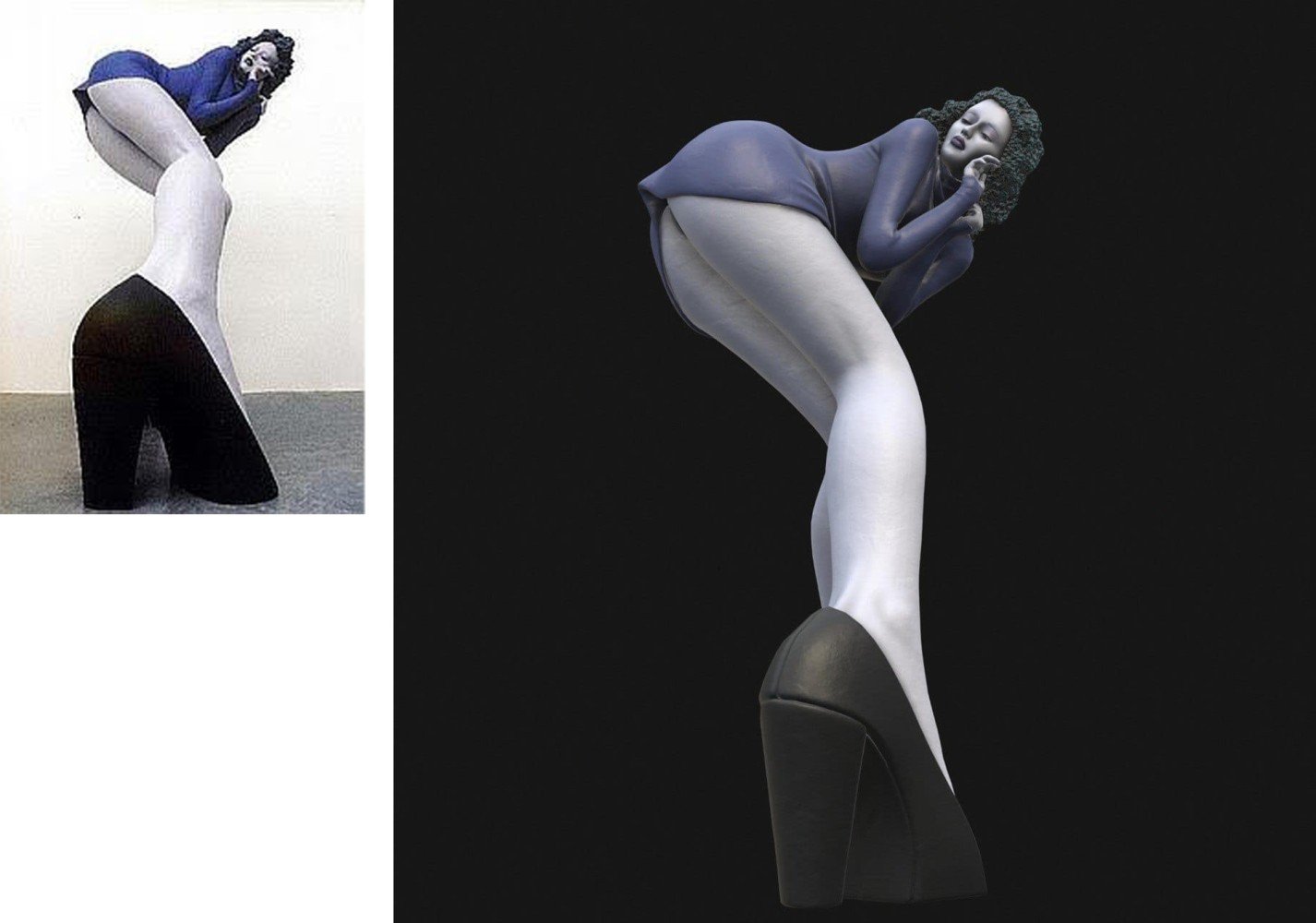Exploring the Intersection of Art and Technology
Photo Credit: Valeriia Ten
Yesterday, on 3 July 2024, I had the utmost pleasure of being a panelist for the French Tech Connect #34: Exploring the intersection of Art, Technology and Ownership organized by the French Tech Seoul.
I shared my perspective alongside three co-panelist, Mika Noh, Legislative Director at The National Assembly of The Republic of Korea, Hélène Quintin, Co-Founder and CEO at KERU, and Laurie Bonin – Co-Founder at Artpoint. We also had the wonderful Nicolas Mercier, Co-President at French Tech Seoul and Agathe Vinson, Audiovisual Attaché at the Embassy of France to the Republic of Korea as moderators. I found the conversation to be very stimulating and wanted to put it down in writing. As usual for me in this format, I am only posting the questions I answered so please check out the other panelists for their contributions. I hope you enjoy!
TECHNOLOGY & CREATION
How is technology shaping the way artists create, distribute, and monetize their work?
Dominika: It’s democratizing distribution and monetization by creating new ways for people to connect. And that's crucial for innovation of thought, inviting new people to the table. I think as with any system that’s been around for too long without much disruption, things tend to get a bit stale. And some of those who have been able to build a great position for themselves just like to hold on to what gives them a sense of stability. That’s the way we are as humans. That’s why change is important, it shakes things up and allows for a fresh approach to revive the ecosystem and expand it.
As for creation, when we say technology in the context of art we tend to think of the hottest topic – AI – but this has been an ongoing conversation ever since photography and video have entered the chat. A good example is the late Nam June Paik (백남준), one of Korea’s greatest artists, considered to be the founder of video art. The fact that he used TV screens to create art was very disruptive during his time too. Technology is just one more language the artist has at their disposal.
Photo Credit: Elliott Erwitt / Magnum
What are the advantages and disadvantages of using AI and generative art tools in artistic creation? Do they enhance creativity or pose a threat to originality?
Dominika: I think this is the same issue humanity has faced throughout history as it evolves and gains new tools. Perhaps spiced up a bit due to how these algorithms are trained, feeding off of existing art at an unprecedented scale.
From my perspective, AI is here to help with the mundane and open up new possibilities, it's not here to replace creativity or be completely relied on. It's also not like the data fed to it was only masterpieces so there is no intehrent guarantee of success.
At some point the depth of thought or lack thereof will show, no matter how flashy the art is. The artistic thought is what counts. The reason why Marcel Duchamp is still considered one of the greatest artists isn't because the urinal or snow shovel he used for his Readymade series were exceptionally beautiful. It's the concept he was expressing.
Photo Credit: Succession Marcel Duchamp/ADAGP, Paris and DACS, London 2024
Can digital art truly capture the essence and emotional impact of traditional art forms?
Dominika: My response is why not? But also – does it have to? I have worked a lot in e-commerce tech and remember when at some point during the COVID-19 pandemic there were speculations that physical retail would cease to exist. But it didn’t. We seek the tactile, we seek the experience.
We now have the term omnichannel and online and offline just serve different purposes without being thought of as cannibalizing each other - rather, complementing. The same way, traditional art forms will serve a different purpose than the natively digital ones. And sometimes digital will also be able to augment the physical – e.g., through digital twins, as it often does in other areas of our life.
Someone I consider a friend, a French art collector named Sylvain Levy and his wife Dominique Levy, are proving this with their DSLcollection. I really admire their approach because they have a clearly defined vision for the use of technology. They are true pioneers.
Photo Credit: dsl collection | Left the original work, right the 3D version
COMMUNITY & COLLABORATION
What role do social media and online marketplaces play in the discovery and promotion of digital artists?
Dominika: I think they play a very important role in making art feel more accessible to the younger generation – that is people with whom digital art resonates most because it is so similar to their own experience. Galleries and museums can feel too intimidating for many, plus we are all now used to having easy access to information and digital platforms and social media allow for exploration on our own terms. In Korea we have Klip Drops, a subsidiary of Kakao Corp - and Kakao knows very well what works for the Korean audience as basically the whole country uses their messenger app daily.
These new channels are also the perfect way to promote lesser known artists. What we’ve seen happen for many musicians thanks to their social media following is also very true for digital artists. Art, like any other industry or even perhaps more so because many consider it to be quite elitist, can have high entry barriers. It’s wonderful to see that the opportunity to have one’s art appreciated is much more easily available. Especially to those who sometimes had no way of accessing it the traditional way.
FUTURE OUTLOOK
What advice would you give to aspiring digital artists and collectors navigating the evolving world of art and technology?
Dominika: I think what I can say here, as someone who has also worked a lot with disruptive technologies, is that the most essential thing is to remember that technology should serve a purpose. No matter how shiny it is, if there’s no substance behind it or real use for it – it will not stand the test of time. This is true both for creators and collectors. Focus on the why and whether it's well answered.
But at the same time, don't be afraid of technology. The way not every company needs to be on TikTok or hire ten AI engineers, you don't have to produce an NFT or use generative AI in your work. Do what feels right, start with things that allow you for some experimentation before you gain confidence in your decisions.




